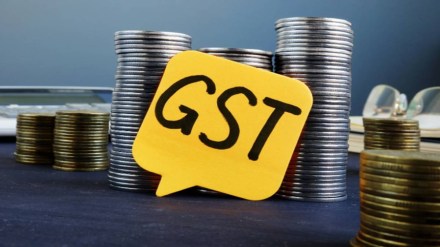By Jyoti Vij
This festive season brings with it more than celebrations—it carries a sense of renewed economic optimism. The roll-out of goods and services tax (GST) 2.0 has injected fresh momentum into India’s growth story by enhancing household purchasing power, easing business operations, and simplifying tax administration. By rationalising slabs and lowering rates across a range of consumer goods, the reform has delivered tangible savings for households, freeing up disposable income and helping stimulate demand.
In many ways, GST 2.0 reaffirms the fundamental principle that simpler taxation and greater transparency are among the most powerful enablers of sustained economic growth. With private consumption contributing nearly 61% of India’s GDP, maintaining domestic demand is essential to sustaining the country’s growth trajectory amid global uncertainty. The new GST regime directly addresses this need. By cutting tax rates on goods that define everyday life, GST 2.0 has put purchasing power back into the hands of ordinary citizens.
A FICCI-CASCADE analysis, based on National Sample Survey Office household consumption data, estimates the reform will result in more than 1.4 lakh crore of tax savings for households. When combined with the 1 lakh-crore income tax relief announced earlier in the Budget, total annual tax savings exceed Rs 2.4 lakh crore.
Such a boost to disposable income will not only drive higher consumption but also encourage greater savings and investment, creating a virtuous cycle of growth. This surge in consumption-led activity is expected to have multiplier effects across the economy—reviving capacity utilisation in manufacturing, strengthening supply chains, and spurring private investment. In a global environment marked by sluggish demand, India’s ability to rely on its own domestic market as a growth engine stands out as a defining strength.
In fact, FICCI’s latest quarterly survey on manufacturing has provided early indications of strengthening demand in the economy. Compared to Q1 FY26, when 77% of respondents reported higher or same production level, nearly 87% reported similar or better production level in Q2. Domestic demand is also increasing, with 83% of respondents expecting higher orders in Q2. Average capacity utilisation stands at around 75%, underscoring steady activity. The investment outlook remains upbeat, with over 50% of respondents planning new investments or expansions in the next six months.
GST 2.0 is also expected to have a moderating influence on inflation, particularly in categories that weigh heavily in the consumer price index (CPI). By rationalising tax rates on fast-moving consumer goods items, household appliances, and other essentials, the reform reduces the overall tax burden on consumers and businesses. This easing of prices is already reflected in macro indicators. In its most recent policy statement, the Reserve Bank of India acknowledged that GST rationalisation could lower prices across key CPI components and, accordingly, revised its inflation forecast for FY26 from 3.1% to 2.6%.
The transformative power of GST 2.0 lies not only in rate cuts but also in its regulatory simplification and digital integration. The introduction of pre-filled returns, automated refunds, and simplified registration—especially for e-commerce sellers—marks a significant step forward in improving India’s ease of doing business. A key feature is the Simplified GST Registration Scheme for small and low-risk entities. Leveraging data analytics, the system will process low-risk registrations within three working days, reducing bureaucratic friction and improving compliance. The Central Board of Indirect Taxes and Customs says nearly 96% of new applicants will benefit from this fast-track mechanism.
GST 2.0 is emblematic of India’s tax evolution—a move from complexity to clarity, compliance to confidence. While its immediate impact will be visible in enhanced consumption and moderated inflation, its long-term benefits will emerge from improved formalisation, higher tax buoyancy, and a deeper investment base. The next phase of India’s economic journey must now focus on factor market reforms—particularly in land, labour, energy, and capital—which directly influence the cost of doing business. Progress on these fronts will be crucial to sustaining India’s competitiveness and attracting high-quality investments. The recommendations of the High-Level Committee on Non-Financial Regulatory Reforms are expected to guide the next leap toward a truly trust-based regulatory environment.
At the same time, India’s reform momentum must align with capacity building in education, skilling, and R&D. Preparing the workforce for future industries—semiconductors, clean energy, artificial intelligence, and advanced materials—will ensure growth is not only rapid but also sustainable and inclusive. GST 2.0 is more than a tax reform—it is a statement of economic confidence and institutional maturity. It reflects India’s ability to pursue bold, forward-looking reforms even amid global uncertainty. By combining fiscal prudence with an unambiguous push for growth, it underscores that India’s development model balances consumption and investment, simplification and stability, efficiency and equity.
With forward-looking measures like GST 2.0, India is reinforcing the foundations of a more resilient, inclusive, and competitive economy, moving us toward realising the vision of Viksit Bharat by 2047.
The writer is the director general of FICCI
Disclaimer: Views expressed are personal and do not reflect the official position or policy of FinancialExpress.com. Reproducing this content without permission is prohibited.
